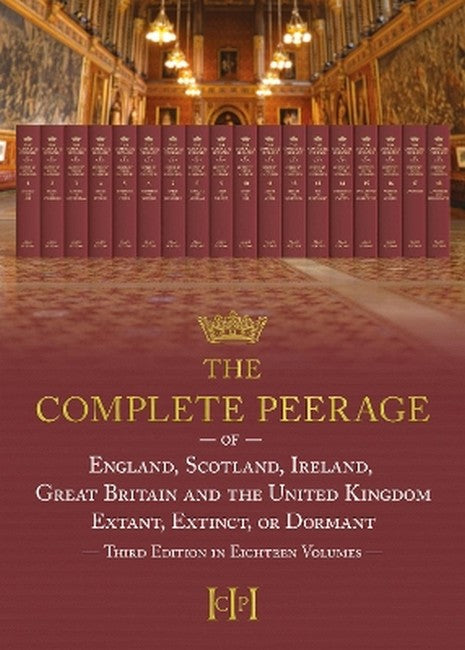The Complete Peerage of England, Scotland, Ireland, Great Britain and the United Kingdom is a standard reference work covering, in the words its alternative title, 'a history of the House of Lords and all its members from the earliest times'. The third edition extends to six million words. The first edition of The Complete Peerage was written by George Edward Cokayne, a distinguished genealogist and long-serving herald at the College of Arms who eventually became Clarenceux King of Arms. It was published in eight volumes between 1887 and 1898, and alongside the same author's five-volume The Complete Baronetage, published 1900-06, it became a standard work. The second edition was published in thirteen volumes between 1910 and 1959, with a final volume of addenda and corrigenda published in 1998. It was revised and enlarged by Vicary Gibbs, a genealogist and former Conservative politician, who was aided by several people including the publisher and historian Herbert Doubleday. Doubleday had edited or co-edited ten volumes of the Victoria County History, and in 1920 succeeded Gibbs as main editor of The Complete Peerage. He worked on several volumes of the second edition until his death in 1941, when he was succeeded by Geoffrey White, who had been a senior editorial assistant on The Complete Peerage since the mid-1930s. White carried the second edition through to the thirteenth volume, published in 1959. The final volume of the second edition, Volume XIV: Addenda and Corrigenda, was edited by the historian and genealogist Peter Hammond and published in 1998. In the same year, Hammond began work on this third edition of The Complete Peerage. With the support of a team of six who joined Peter Hammond in 2018, working full-time on the project, the third edition has been fully updated and integrated with peerage births, marriages, deaths and relevant ancillary information, including biographical details of all peers, together with the law lords who were formerly life peers. It incorporates recent scholarship and goes to great lengths to point the interested reader to further publications and manuscripts using clear source descriptions. References have been expanded and made consistent, abbreviations and contractions have been replaced for the most part with full wording, and the text has been newly typeset using the widely preferred style of minimal capitalisation. This extensive process of modernisation has been completed with the aim of enhancing clarity and making the text more readable and visually appealing. A new glossary, list of abbreviations and comprehensive bibliography extending to more than 10,000 lines have also been added. The third edition will be issued in eighteen volumes over the course of three years, and will also be available on a subscription website, which will allow for further updates.

